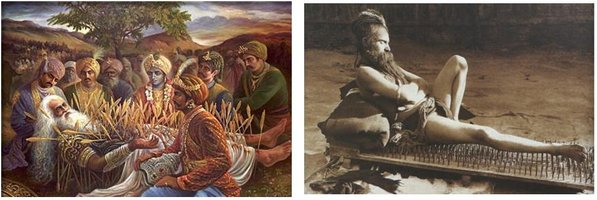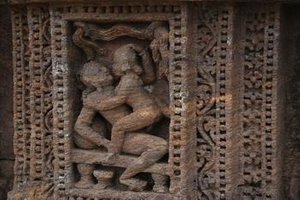
Odysseus
Isse from the island Od in Denmark
The Iliad Ramayana Bhagavad-Gita
Bråvallaslaget - and the Book of Invasions
.
The Battle of Brávellir and the raid against Troy is the same war
The legendary Battle of Brávellir or the Battle of Bråvalla is described by Saxo in Gesta Danorum and in the Icelandic sagas ‘Hervars saga and Heidreks' and ‘Søgubrut af nokkrum fornkonungum in Dana ok Sviaveldi'.
There are at least ten amazing similarities between the Iliad and the Battle of Brávellir.
Similarity number one.
The first similarity is the size of the Battle of Bråvalla and the raid against Troy.
The Danaans are attacking Troy with 1186 ships and round 60,000 men. Their enemy the Trojans has a force of at least 50,000 men.
On the battlefield at Brávellir (Or Bråvalla – pronounced Braw Valley) 200,000 warriors meet and at least 40,000 die. The entire northern Europe has apparently gathered to fight on the Brávellir for the armies include Danes, Scanians, Jutes, Geats and Swedes, Norwegians, Saxons, Angles, Frisians, Irishmen, Englishmen, Vends (Wends), Russians from Gardariki, Gutes from Gotland, Finns and many other people.
Similarity 2 to 8 and similarity 10 stands on page 162-164 in the book Odysseus – Isse from the island Od in Denmark. You can find it under Documents and Links. 12 mb, 202 pages.
Similarity 9.
The ninth similarity is: – that in the Iliad the three goddesses Aphrodite, Athena and Here appear in the flesh of a human and help Danaans. Messenger of the Gods Iris comes twice in the flesh of a human and helps the Trojans.
Aphrodite comes in the shape of beautiful Helens’ wool carder, an old Achaean woman from Sparta (Il 3-385). Hera comes in the shape of Stentor, a loud-throated Achaean man (Il. 5-785).
By Saxo and in the Icelandic sagas, we meet the three shield fighting Danish women Hede, Vebjørg and Visma.
Pallas Athene comes three times in the shape of a man. First as the Achaean Foinix (Il. 17-544), then as a human being to comfort Achilles (Il 21-284), and finally as the Trojan Deifobos to entice Hector into an unequal battle against Achilles (Il. 22-227).
Iris comes as Priams’ son Polites (Il 2-789) and as Priams’ daughter Laodike (Il 3-121).
There are six large and small similarities between:
— The raid against Troy in the Iliad
— The Battle of Brávellir from Saxo and the Icelandic sagas
— The Book of Invasions from Ireland
— The North Indian Epic the Bhagavad Gita and the battle of Kurukshetra
— The South Indian epic the Ramayana
Similarity 2.
The second similarity is the Danaan Achilles in the Iliad and the avatar and god Krishna in Bhagavad Gita. Krishna is wagon driver for Pandus’ son Arjuna.
Both Achilles and Krishna die from an arrow shot in their heel, the only place they are vulnerable.
Similarity 4.
The fourth similarity is the fighter Ubbe the Frisian in the Battle of Brávellir and the warrior Bhisma fighting on the side of the Kaurava brothers on Kurukshetra.
Ubbe the Frisian fights on the Danish side in the Battle of Brávellir and there a swarm of arrows take his life.
– One hundred and forty-four arrows sat there in his chest before his body was tapped for forces and he sank to his knees (Saxo 8.4.7).
In the Icelandic saga Søgubrut af nokkrum fornkonungum in Dana ok Sviaveldi he is killed by 12 times 12 arrows.
English records show that a trained marksman with a longbow could shoot 12 arrows per minute. In combat they carry a quiver with 12 arrows at the hip.
Bhisma dies in the Mahabharata War with so many arrows in his body that they bear him up from the ground for a long while before he dies. When he is lying on his death bed of arrows his enemy Arjuna comes to say goodbye to him. Bhisma asks for support for his head for now he is tired, and asks Arjuna to put three arrows under his head so it rests on the arrow-heads.
He lies so for the rest of the battle and dies finally without harsh words and without complaint.
Bhisma dies either by damage shock, anemia or hyperventilation.
Similarity 1 to 6 stands on pages 165-167 in the book Odysseus – Isse from the island Od in Denmark. You can find it under Documents and Links. 12 mb, 202 pages.
Bhisma dies on his bed of arrows. The same scene can be seen as relief at Angkor Vat in Kampuchea.
Ubbe the Frisian dies in the Battle of Brávellir in the same way with twelve times twelve arrows in his body.
This historical account is perhaps the inspiration for fakirs lying on their bed of nails.

The Indian epic Ramayana is the same war
as the Iliad and the Battle of Brávellir
And the same war as the Tuatha De Dananns’ war in Lebor Gabala – The Book of Invasions on Eire (Ireland) and the battle of Kurukshetra in the Indian heroic poem Bhagavad Gita.
These five major epic wars depict in fact the same great war.
It all started when the Danaans from Seeland in Denmark around 1230 BC attacked the Trojans in Troy, which is the city of Bergen on the island of Rügen in nowadays north German landscape Pomerania.
The core of the South Indian epic Ramayana follows the same track as the other four heroic poems.
The Ramayana (Sanskrit 'The wanderings of Rama') is an ancient Indian epic which tradition attributes to Valmiki, a wise man. The Ramayana is available in several poems, for example these three in translation into Danish and Swedish.

Aubrey Menen, The Ramayana, As Told by Aubrey Menen. Aubrey Menen was born in India and follows the traditional Ramayana from Valmiki.
Guni Martin, Ramayana – beretningen om helten Rama, in Danish. A real adventure,
Allan åkerlund, Prins Rama och demonerna, in Swedish. This is a voluptuous narrated version with many sections which other translations omit.
Read this book and you can well understand why the Sun Temple Konarak near the city Puri in India is decorated with erotic images.
There are at least eight similarities between Saxos’ History of Danmark (Gesta Danorum), the Ramayana, the Iliad and the Odyssey.
Similarity number two.
– In the Ramayana the demon king Ravana kidnaps queen Sita and takes her to his fortified town on the island of Lanka.
– In the Iliad the divine beautiful Helen is abducted to the fortified city of Troy on the island of Rügen.
Similarity four.
– In the Ramayana, Rama and Ravana are fighting the final battle on the island Lanka.
– In the Iliad, Achilles and Hektor fight the final battle outside Troy on the island Rügen.
Similarity seven.
In Ramayana:
– In the final battle against the demon king Ravana of Lanka prince Rama is wounded in his leg by an arrow that tears a deep wound. He survives that.
In the Iliad:
– At the Scaean Gates Achilles is shot in his heel by an arrow from the God Apollo in disguise as the Trojan Paris. He dies from the wound.
Achilles is otherwise invulnerable except in his heel. Therefore, a weak point is called an Achilles' heel.
All eight similarities can be found on pages 168-170 in the book Odysseus – Isse from the island Od in Denmark which you can find under Documents and Links. 12 mb, 202 pages.
Draupadi in Bhagavad Gita – Sita in the Ramayana – ‘the divinely beautiful' Helen in the Iliad These three beauties are all the same historical person

The evil Dukshana tries to tear of the clothes Queen Draupadi is humiliated in front
of queen Draupadi in front of the crowd. of the crowd.
The god Krishna makes her sari endless Now we can guess what the beautifull
so his vile plan fails. Helen endured as captive in Troy.
The Ramayana is as a national epic in many countries in Southeast Asia.
As the Ramakien in Thailand, the Ramakavaca on Bali, Maradia Lawana in the Philippines, the Reamker in Cambodia (Kampuchea) and Yama Zatdaw in Myanmar (Burma).
The monkey god Hanuman is general in the Ramayana – and thus Odysseus in the Odyssey – is the main character in the Chinese epic Journey to the West in the Great Tang Dynasty.
The Mahabharata and the Ramayana are created in the epic age from around 300 BC.
The Mahabharata is created from about 300 BC to about the year 300.
The Ramayana is created from about 300 BC to the year 100.